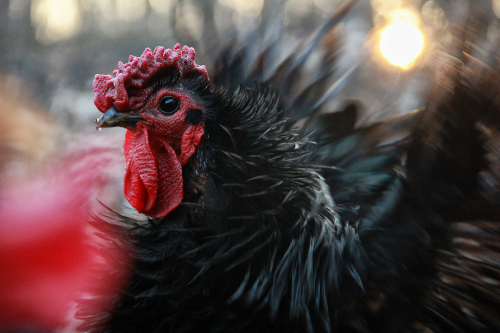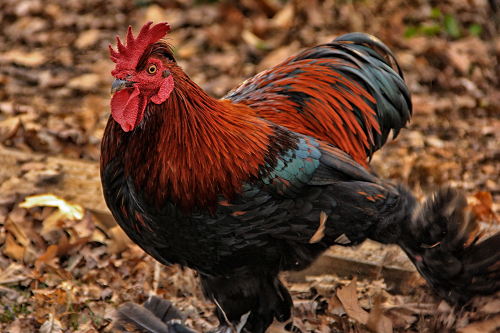H5N1: The Avian Flu in 2006
The following article was written in May of 2006. Obviously the H5N1 threat of 2006 passed with little incident, but it is never-the-less important to remember that there is always the possibility of a global pandemic.
The World Health Organization believes that if the currently circulating H5N1 avian flu virus causes the next pandemic, the best-case scenario is that only between two and seven million people will die. If the cause were, in fact, the HP (Highly Pathogenic) form of the virus that recently emerged, then the world would be facing a significantly higher number of casualties. Historically speaking the human population experiences between three and four pandemics every century, but we have not seen anything comparable to this potential threat since 1918-1919 when the Spanish Flu killed close to 50 million people. Most experts agree that it is not a matter of IF the H5N1 virus will cause a pandemic and kill millions of people worldwide; it is only a matter of WHEN.
There are several approaches to minimizing the death toll before or at the event horizon of a pandemic. Vaccines offer the best hope for prophylaxis. The bad news is that even though many countries have already commenced production of an H5N1 vaccine, vaccine production for a specific mutation of any virus cannot truly begin until the exact strain of the virus has been identified. For example, when someone receives a vaccination shot for the Seasonal Human Influenza, commonly known as the Flu Shot, they are being vaccinated against a viral strain that was the scientific “best guess” for what this season’s influenza strain would be. That is why we commonly hear people say that they aren’t going to bother getting the Flu Shot, because it doesn’t protect against this year’s flu anyway. The H5N1 virus has shown a significant capacity to mutate, but to date, it has not mutated to a form that is easily and sustainably transmitted from human to human. Once the new viral strain has been identified and vaccine production begins on a large scale, it will still be between two and four months before the vaccine will be ready for mass distribution to the public.
A second choice for curtailing a colossal death rate would be antiviral medications. There are currently several commercially available, however the efficacy of most of these are questionable at best. The greatest hope lies with Oseltamivir and Zanamivir, commonly known as Tamiflu and Relenza respectively. These two drugs have shown the most significant reduction of viral symptoms and viral replication periods. The bad news, with this option, is actually two fold. As a prophylactic drug, one dose is only good for one day. It would be necessary to have enough Tamiflu for every person in an effected region to take one pill each day for the duration of the viral attack wave. Unfortunately, it is estimated that the first wave of viral activity will last for one hundred or more days. Roche Pharmaceuticals will not disclose how many doses it can produce each year; but they estimated that to fill the United State’s current order, it would be somewhere in the line of ten years. Additionally, antiviral drugs such as Tamiflu and Relenza are only effective as a treatment option if administered within the first 48 hours of symptoms.
Here is where the global economic impact of this impending pandemic swings into full force. With the demand for these drugs at such a high level, and the availability not congruent with the demand, some countries are taking matters into their own hands. A generic drug maker in India announced last year that they would ignore Roche’s patent and begin production of a generic Tamiflu for the benefit of third world countries that could not afford the brand name version. Taiwan shortly followed suit and announced work on its own version. Government intervention will most likely be an inevitable result of a global outbreak of H5N1. It is expected that governments will override the patent and allow generic drug companies to produce Tamiflu and Relenza type drugs to increase global supply.
Patent overrides are only the beginning of the economic impact of the fear of contagion by H5N1. In an article in Business Week Online, entitled “A Pox of Fear on Europe’s Farms”, we learn that fear without fact has affected the French National Economy. Although the immediate threat is relatively low, stories of H5N1 discovery in waterfowl in several European countries has taken its toll on Europe’s leading poultry producer and exporter. Forty countries around the world, including the United States, have imposed bans on importing French poultry products. This has literally devastated their $7 billion a year industry, which employs nearly 100,000 people. To make matters worse, in February of 2006 the first case of H5N1 in France was confirmed causing sales to plummet 30%, despite the fact that adequate cooking kills the virus eliminating the risk of exposure from properly cooked poultry products. The damage done by trade restrictions imposed by other nations is further compounded by citizen’s own personal fears.
France’s economy is not the only one to be devastated by the looming Pandemic fear. Germany, Europe’s third largest poultry producer, has lost an estimated $168 million in revenues and eliminated as many as 10,000 jobs. Although the H5N1 virus has been confirmed in six of Germany’s federal states, commercial poultry has yet to be infected. Many governments are urging farmers and producers to keep their flocks indoors. The greatest risk appears to be infection by migrating waterfowl, and by keeping commercial birds indoors, it significantly reduces the risk of infection. However, the precautions being taken by poultry producers in many countries are not sufficient to quell the fears of the public and reinstate demand for their product.
As an additional impact to Global economic issues, mass culling of flocks, infected or suspected to be infected, was instated as standard practice in an attempt to contain outbreaks. Yet, in February of 2004, the United Nations Food and Agriculture Organization advised that culling in affected areas failed to halt the spread of the disease. The mass culling of millions of birds worldwide had a particularly devastating effect on the economy in rural China, where some small farmers depended on their flocks for family income. Similarly, Pakistan’s population felt the effect of culling practices when tens of thousand of birds were slaughtered as a preventative measure. Indonesia, on the other hand, reported their refusal to comply with culling practices, stating that their government did not have the estimated $90 million necessary to compensate farmers for their losses. They instead intended to only destroy poultry and pigs with confirmed cases of H5N1. In a story closer to home, the Associated Press released a statement, from the U.S. Agriculture Department’s Animal and Plant Health Inspect Service, that in the event of the H5N1 virus’ arrival on U.S. shores, the government intends to kill any flock suspected of contamination even before tests confirm or deny it.
In 1918, the Spanish flu virus H1N1 killed almost 50 million people, and in 1957 the Asian Flu virus H2N2 took the lives of 100 thousand Asians, and in 1968 Hong Kong saw the deaths of 700 thousand of their citizens by H2N2. However, at no time in history have we ever had such an interrelated global economy as we do now. International Trade has expanded unabated for years, supporting many underdeveloped countries absolute and comparative advantages to produce and export good and services. At no other point in history did a global pandemic pose such an economic threat. Not only are we as a global population facing the potential loss of our brothers, our sisters, and our children, but the survivors will be faced with the challenge of rebuilding from the economic destruction. Businesses, both domestic and international, provide us with employment, salaries and products. Without the land resources that we receive through international trade and the labor resources that business is dependant on, the future of all nations economies take on a rather bleak outlook.
Bibliography
Pride, William M., Robert J. Hughes, Jack R. Kapoor. Business. Boston: Houghton Mifflin Company, 2005.
Reinhardt, Andy. “A Pox of Fear on Europe’s Farms.” Business Week Online. 3 Mar. 2006 <http://www.businessweek.com/globalbiz/content/mar2006/gb20060315_441459.htm?ca mpaign_id=search>
Nature: International Weekly Journal of Science. Nature Publishing Group. 2006.
<http://www.nature.com/nature/focus/avianflu/timeline.html>
Avian Influenza Information. Avian Influenza.org. 2006. <http://www.avianinfluenza.org/>
CBC News Indepth: Avian Flu. CBC News Online. 21 Mar. 2006.
<http://www.cbc.ca/news/background/avianflu/protection.html>
Cowan, Tyler. “Indonesia Won’t institute Mass Culling.” Online Posting. 25 Jul. 2005 Avian Flu – What We Need to Know. <http://avianflu.typepad.com/avianflu/2005/07/indonesia_wont_.html>
United States Department of Agriculture: Animal and Plant Health Inspection Service. USDA. April 2006. <http://www.aphis.usda.gov/newsroom/content/2006/02/frenchai_vs.shtml>
International Information Programs. USINFO.STATE.GOV. 9 Feb 2006. <http://usinfo.state.gov/gi/Archive/2006/Feb/09-775155.html>
Center for Disease Control and Prevention. CDC.gov. 13 Apr. 2006. <www.bt.cdc.gov>
National Library of Medicine. National Institute of Health. 25 Apr. 2006. <www.nlm.nih.gov>
World Health Organization. World Health Organization International. 2006. < www.who.int>


